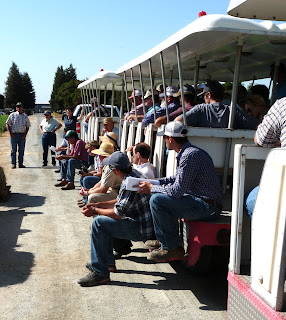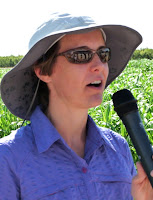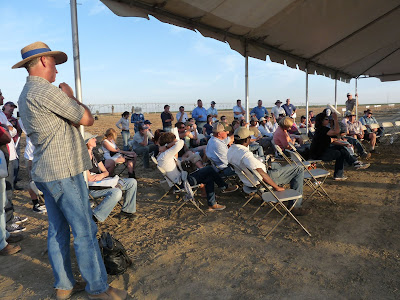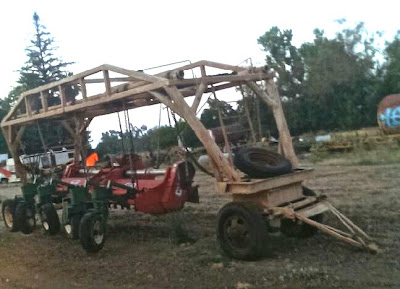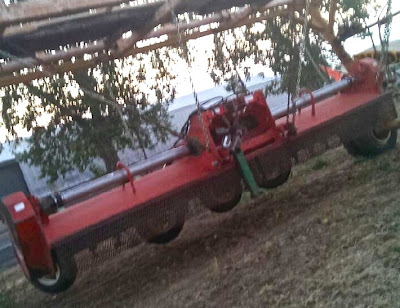FEINSTEIN TO DHS: HALT I-9 AUDITS; SOLVE AG WORKER SHORTAGE
Urges ICE To Re-Focus
On Violent Crimes
On Violent Crimes
Senator Dianne Feinstein (D-Calif.), a senior member of the Senate Judiciary Committee, posted a press release on her website on Wednesday, September 4, 2013, declaring that she is urging the Department of Homeland Security to use prosecutorial discretion and to focus immigration enforcement efforts on violent criminals rather than on legitimate agricultural employers and their workers.
In a letter to Secretary Janet Napolitano, Feinstein described the troubling feedback she is receiving from California farmers that Immigrations and Customs Enforcement (ICE) is continuing to use I-9 worksite audits against agricultural employers, an issue she first raised in a letterto former ICE Director John Morton in June 2012.
Text of the letter follows:
September 3, 2013
The Honorable Janet Napolitano
Secretary
, U.S. Department of Homeland Security
Washington, DC 20528
Dear Secretary Napolitano:
As you may be aware, I wrote former U.S. Immigration and Customs Enforcement (ICE) Director John Morton a little over a year ago on June 13, 2012, requesting that ICE’s enforcement efforts focus on immigration law violations that involve serious violent crimes, per President Obama’s directive, as opposed to members of the agricultural community. Please find the June 13, 2012 letter, attached. I am unfortunately again receiving troubling feedback from farmers in California that ICE is increasing I-9 worksite audits against agricultural employers. As you have recognized previously, the agricultural industry faces an acute shortage of domestic workers. Therefore, I respectfully request that you redirect ICE’s enforcement efforts to focus on immigration law violations that involve serious violent crimes, and that you exercise prosecutorial discretion to forego enforcement against legitimate agricultural employers and their workers.
Many farmers and growers in California informed me that their business and livelihood are at risk due to a shortage of legal harvesters, pickers, pruners, packers, and farm workers. As you can imagine, with approximately 81,000 farms in California, I am very concerned that these audits will result in significant harm to the agricultural industry and the state’s overall economy.
Nor is California’s situation unique in our country, although, as the largest agricultural state, California is particularly affected. Farmers from all across the United States have expressed the severe harm they have been suffering from the lack of willing and available domestic agricultural employees. For your benefit, I am enclosing a booklet that I compiled, which provides examples of the workforce crisis facing the agricultural industry from every one of the 50 states in the U.S.
The utilization of I-9 enforcement audits against agricultural employers exacerbates this crisis. When employers being audited receive notification that certain employees have not provided proper work authorization documents, those workers must be terminated. Because the reality is that the majority of farm workers in the U.S. are foreign-born and unauthorized – which is well-known –, I am afraid that this aggressive worksite enforcement strategy will deprive the agricultural sector of most of its workforce and cause farmers and related industries across the country significant economic harm, as well as driving up food prices for consumers.
As I believe you are aware, this year, I collaborated with Senators Rubio, Bennet and Hatch to negotiate and develop a new bipartisan legislative proposal to solve this crisis that is balanced and fair. This proposal, the “Agricultural Worker Program”, was incorporated into the Border Security, Economic Opportunity, and Immigration Modernization Act, which the Senate passed in June 2013.
However, until Congress passes comprehensive immigration reform laws, I strongly believe that we cannot ignore the plight of America’s farmers, especially during tough economic times. For every job lost on farms and ranches, the country loses approximately three jobs in related sectors, like packaging and manufacturing that are supported by having the agricultural production here in this country. Without action on this important issue, I am concerned that the production of American-grown fruits, vegetables, and dairy will continue to downsize or move overseas, which puts the economy and health of the Nation at risk.
Immigration and Customs Enforcement has wisely used its prosecutorial discretion to defer removal of young people who arrived in the United States without documentation as children, recognizing that our limited resources are better spent targeting aliens with criminal records or who otherwise present a threat to the safety of the United States. I respectfully suggest that you adopt a similar policy of exercising prosecutorial discretion to defer enforcement against agricultural employers and workers, and concentrate instead on removing those who would and have harmed our society, rather than those who contribute to our vital agricultural economy and heritage, and the safe and high-quality food supply that benefits all Americans.
Sincerely,
Dianne Feinstein
United States Senator

